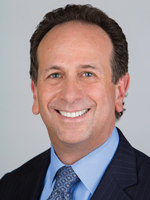ProShares is the largest provider of U.S.-listed leveraged and inverse exchange-traded funds, and this focus has made the Bethesda, Md., company the ninth-largest U.S.-based ETF provider in terms of assets with $31.3 billion under management across its roster of 141 funds. In recent years, it has sought to broaden its appeal by launching more buy-and-hold products such as its Pet Care ETF (PAWZ) and Online Retail ETF (ONLN). ETFA recently spoke with ProShares CEO Michael Sapir about the pet business and other matters.
ETFA: I notice this trend, including from ProShares, of using the term “geared” funds for leveraged and inverse ETFs. What does “geared” mean?
Sapir: “Geared” is the term used in Europe to describe funds like these. We think it's a much more elegant way of referring to these types of funds.
ETFA: What percentage of ProShares funds are in the geared category?
 Sapir:
Sapir:
ETFA: Traditionally, who has been the main constituency for the ProShares ETFs?
Sapir: Well, they're not for mom-and-pop investors. It’s mostly knowledgeable investors who are looking to implement more sophisticated strategies.
ETFA: Is that more along the lines of institutional investors? How about financial advisors?
Sapir: Advisors do, and historically have, used geared products. There’s a fallacy out there that geared products are solely for very short-term trading. Many of our users actually use geared products as a hedge in a conservative manner. So if an advisor has concerns about what's going on in the market and it doesn't want to sell out their client’s position because of transaction costs or tax consequences, frequently they'll overlay an inverse product in order to reduce the risk in the portfolio. Geared products are tools, not strategies. As tools they can be used in a variety of different ways. Some are more aggressive and some are actually very conservative.
ETFA: Some of the products your firm launched in the past year-and-a-half or so, such as PAWZ and ONLN, are more retail investor-oriented funds. It might be an obvious question, but why did you roll out those types of products?








